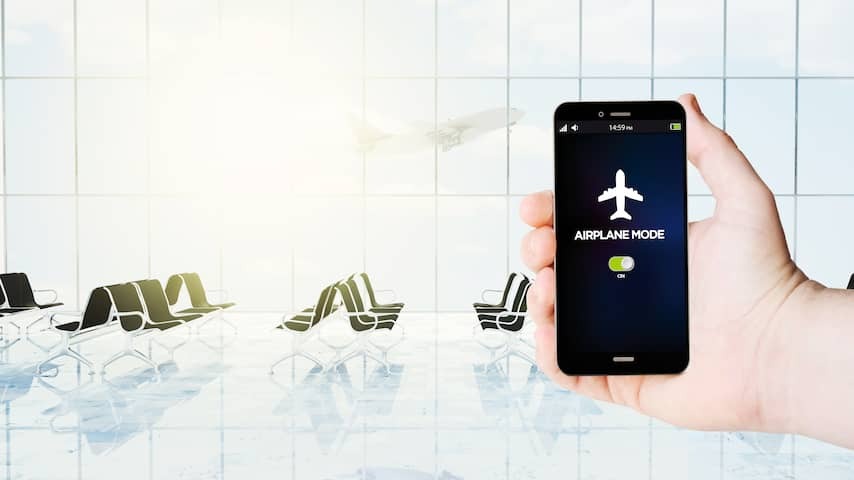
Set your smartphone to airplane mode, that’s what most airlines ask just before takeoff. What happens if you don’t?
For a long time, it was forbidden to leave a mobile phone on during a flight, but in later years the rules have been relaxed. For example, smartphones have been allowed since 2014 by the European Aviation Safety Agency without airplane mode activated.
Yet it is often still asked whether you want to activate airplane mode. This is partly due to a study from 2003, which concluded that your phone can interfere with the GPS systems in the cockpit. According to the researchers, it is impossible to say whether this has actually happened and has led to accidents.
Equipment in airplanes has since been improved and is generally well shielded against interference. As a result, your smartphone is unlikely to interfere with the sensors in the cockpit. However, using airplane mode does help prevent other problems.
Good for your phone’s battery
Your smartphone is always trying to connect to a mobile network. In an airplane you are flying too high to make a connection, causing your phone to keep trying and amplifying its signal.
These constant connection attempts take a lot of power, causing your smartphone to drain faster than normal. By activating airplane mode, you ensure that you still have a full battery once you have landed.
Do it for your provider, not for the pilot
A constantly connection-seeking phone in the plane can also be a burden to telecom masts. If you are still flying low during takeoff, you move quickly from the range of one telecom mast to another. A very small connection is made each time before you fly out of range again.
An airplane full of smartphones can in this way burden the network of a telecom provider in an annoying way: the masts keep trying to determine your position on the network while you jump from place to place. Your phone may not be bothering the pilot, but it is Odido, KPN or Vodafone on the ground.